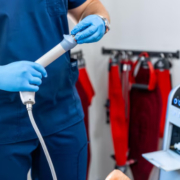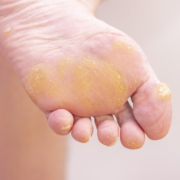Finding Hope: Resources for Anyone Battling Addiction
Introduction: A Path Toward Renewal
Addiction has a way of eclipsing hope, leaving individuals and families in the shadow of despair. Yet, within every struggle lies the possibility of transformation. Recovery is not a single event but a journey—one paved with medical expertise, compassionate support, and an unwavering belief in the potential for renewal. For anyone battling addiction, understanding the resources available can illuminate the path forward.
Understanding the Connection
There has long been debate about the relationship between stimulant drugs and attention disorders. Some people mistakenly assume that substances used recreationally have the same effects as prescribed medications, but this is far from the truth. When it comes to meth and ADHD, the differences are critical. Prescription stimulants are carefully measured, monitored, and intended to improve focus and reduce impulsivity. Meth, however, is unregulated, highly addictive, and harmful to both the brain and body. Confusing the two can lead to dangerous misconceptions. Recognizing this distinction is important in understanding treatment options and avoiding serious health risks.
Understanding the Complexity of Addiction
Addiction is far more intricate than a simple lack of willpower. It is a multifaceted condition shaped by biology, environment, and personal history. Chemical dependency rewires the brain, distorting reward pathways and diminishing self-control. At the same time, societal stigma often paints those affected as morally flawed rather than medically vulnerable. This misunderstanding not only discourages individuals from seeking help but also perpetuates cycles of silence. Recognizing addiction as a complex health issue is the first step toward recovery.
Medical and Clinical Support Systems
Modern medicine offers structured interventions that provide stability during the most vulnerable stages of recovery. Detoxification and inpatient programs create a safe environment for individuals to withdraw from substances under professional care. These programs often include 24-hour monitoring, medication management, and initial counseling.
Equally significant are outpatient treatment programs, which allow individuals to continue daily responsibilities while receiving therapeutic and medical supervision. With access to addiction specialists, psychiatrists, and nurses, patients receive continuous care that adapts to their evolving needs. These clinical foundations serve as anchors, ensuring recovery begins with safety and structure.
Therapeutic Approaches to Healing
Recovery requires more than physical stabilization—it demands a transformation of thought patterns and behaviors. Cognitive behavioral therapy (CBT) has proven to be one of the most effective methods, teaching individuals to identify triggers, challenge destructive beliefs, and develop healthier coping strategies.
Equally powerful is group therapy, where participants connect with others facing similar struggles. These shared experiences diminish feelings of isolation and foster mutual accountability. The therapeutic alliance—whether individual or communal—empowers individuals to reframe their lives and rebuild trust in themselves.
Community-Based and Peer Support Networks
Communities often become the backbone of recovery. Mutual aid groups, such as Alcoholics Anonymous and Narcotics Anonymous, provide safe spaces for sharing experiences and sustaining long-term sobriety. The sense of belonging cultivated in these circles instills resilience and reinforces accountability.
Beyond structured meetings, faith-based initiatives and local nonprofits extend additional layers of support. Many offer counseling, food assistance, or transitional housing, demonstrating that recovery thrives not in isolation but within a network of compassion.
Holistic and Alternative Pathways to Recovery
Healing extends beyond clinical care. Mindfulness and meditation practices help individuals reclaim peace of mind, manage stress, and restore inner balance. Spiritual engagement, whether rooted in organized religion or personal reflection, offers a sense of purpose that fortifies recovery.
Physical well-being is equally vital. Nutrition, fitness, and lifestyle integration repair the body and create sustainable routines. A healthier body reinforces a healthier mind, supporting the long-term stability of sobriety. These holistic pathways enrich the recovery journey, transforming it into a multidimensional process of renewal.
Family Involvement and Support Structures
Addiction rarely affects only the individual—it reverberates through families. By educating loved ones, families learn how to avoid enabling behaviors, reduce codependency, and foster healthier communication. Programs such as Al-Anon or family therapy provide frameworks for mutual healing.
Creating a supportive home environment is essential. Stability, empathy, and consistent encouragement transform the home into a sanctuary that nurtures recovery. When families participate in the process, they strengthen the foundation for lasting change.
Digital Resources and Helplines
In today’s connected world, help is never far away. Online platforms offer educational materials, self-assessment tools, and virtual support groups that can be accessed from the privacy of one’s home.
For moments of acute crisis, national helplines such as the SAMHSA Helpline (1-800-662-HELP) or local crisis hotlines provide immediate, confidential assistance. Virtual therapy sessions and telehealth platforms further bridge the gap, ensuring that geographical barriers do not hinder access to care.
Understanding the Differences
When comparing substances that are often misused, it’s important to recognize their unique effects and dangers. Crack vs meth highlights two powerful stimulants that impact the brain in different ways. Crack, a form of cocaine, produces a fast but short-lived high, often leading to repeated use in a short time frame. Meth, on the other hand, delivers a longer-lasting and more intense high, which can result in severe physical and psychological damage. Both substances carry a high risk of addiction, but their distinct methods of action and health consequences make understanding them crucial for awareness and prevention.
Conclusion: Restoring Hope and Building a Future
Addiction may obscure the future, but it never erases the possibility of renewal. With the right resources—medical care, therapy, community support, holistic practices, and family involvement—recovery becomes not only possible but attainable. Each step forward reaffirms the truth that hope is not lost. For those battling addiction, the journey is arduous, but the destination—a life reclaimed and renewed—is worth every effort.









Leave a Reply
Want to join the discussion?Feel free to contribute!